

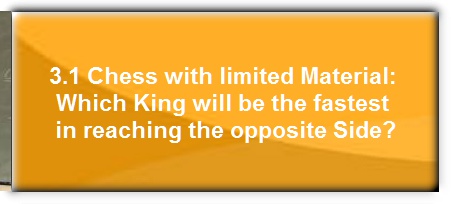
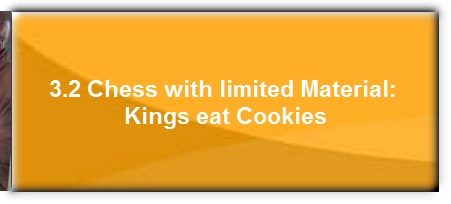
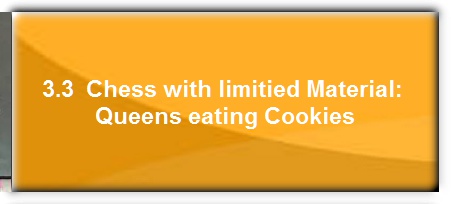
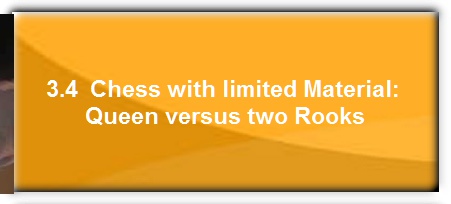
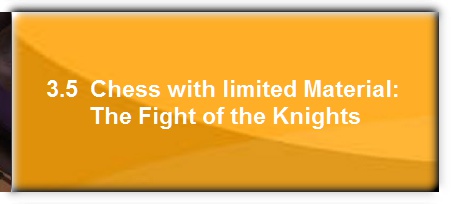
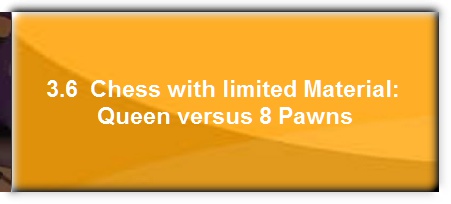
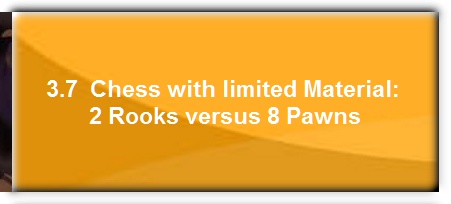
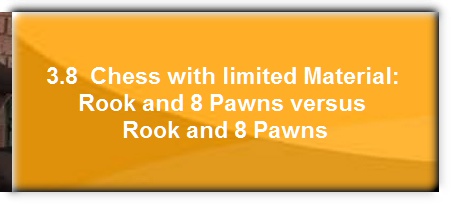
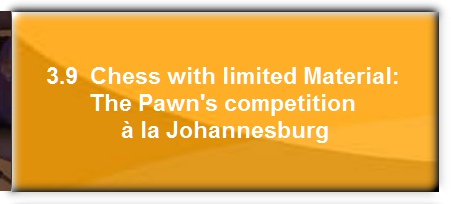

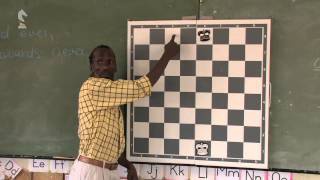
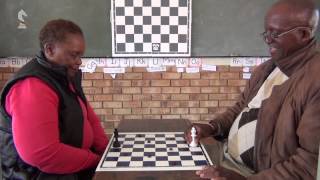
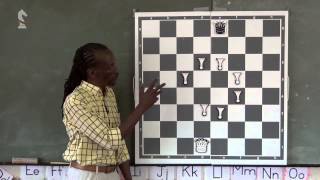
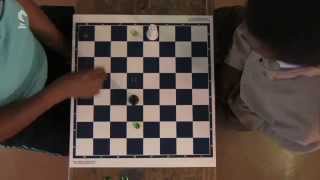
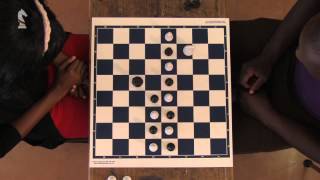
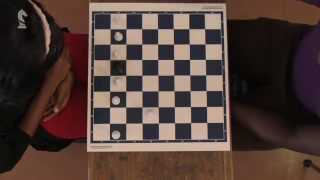
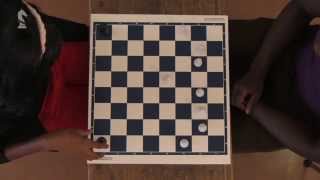
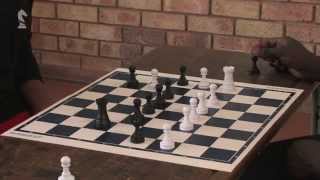
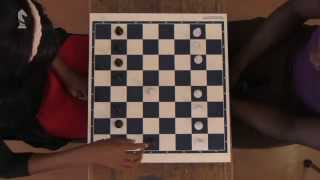
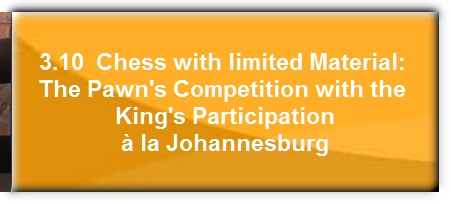
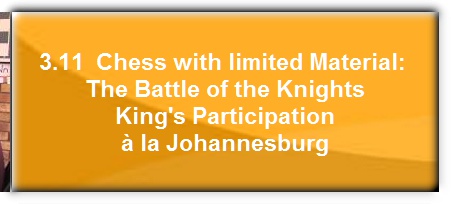
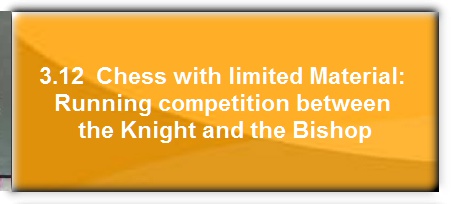
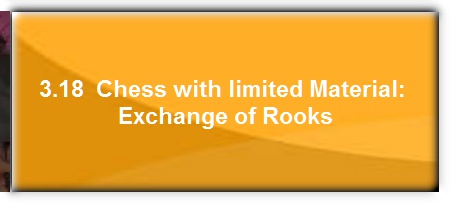
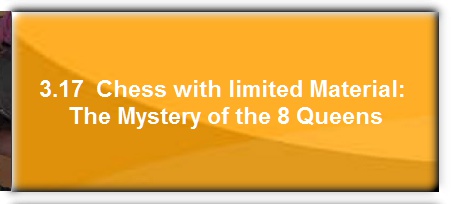
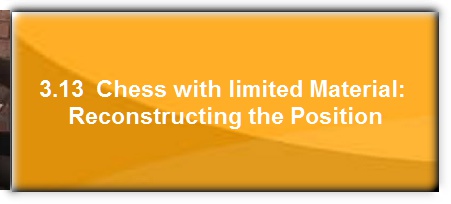
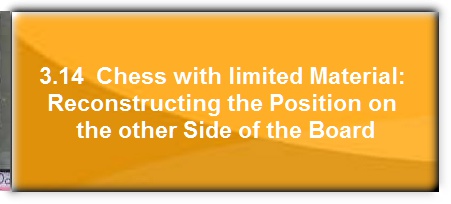
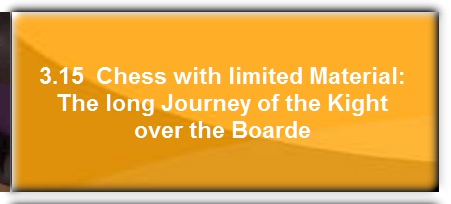
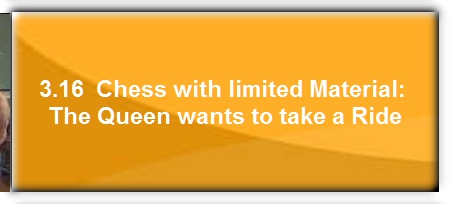

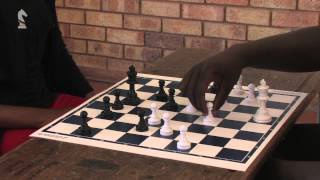
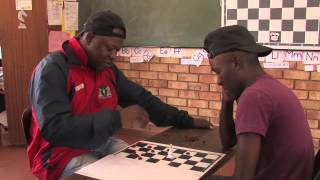
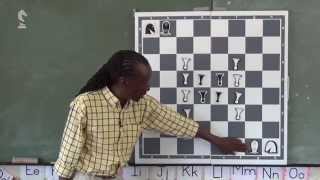
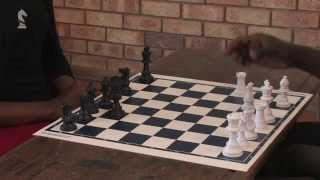
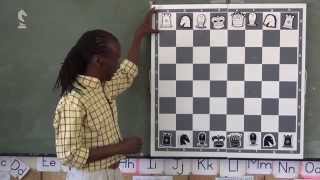
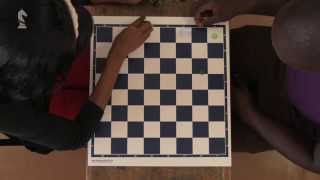
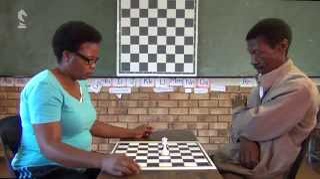
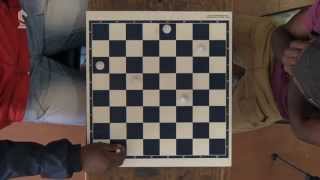
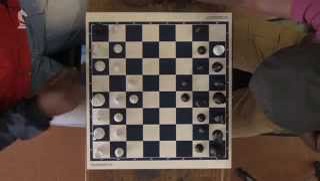



Chess for Africa set up it's own channel on YouTube, in cooperation with the MedienLB: September 2013 we
started to do video documentation: Methodical Chess Lessons at school, intended to serve as support for teachers
and coaches who wish to work as a chess teacher at Primary Schools in South Africa and /or other areas of Africa.
- We begin with first steps, for teachers who might not know how to move the pieces.
At this occasion: we recommend teachers attending a professional chess training to get to know the rules and play some games of chess before they come
to the training, this way they get the maximum benefit from the course!
- We explain it the "african way": our videos are made at Mambo Primary School in Soweto.
While setting up the chess lessons for documentation we worked as a african-european team: ideas and concepts
from chess trainers from Germany were evaluated with the group of chess trainers of chesskids and
CHESSA from JHB and Soweto.
- Chess-Sets to be made by pupils: A special focus was set in making chess sets by the pupils themselves,
during a special lesson at their school. This is a way to start with methodical chess lessons at school even
in areas of Africa where proper chess sets may not be at hand in the beginning.
Simple chess games/exercises using limited material (chess pieces) can be used to help pupils internalize the rules
and teach them how to move the pieces. Such exercises can well be used during chess lessons at primary schools;
pupils learn the rules and have great fun! As we know from our chess teachers, pupils love these lessons more than
anything else!
The 18 chess games/exercises using limited materials were kindly arranged for "Chess for Africa" by Björn
Lengwenus during the chess training at the Mambo Primary School/ Soweto, April 2014, assisted by Stefan Becker.
The explanation on the black board is given by Jabulani Banda/Soweto.
The actors: the games and exercises shown here were new to them. They did very well. A THANK YOU to all who
made these films available!
SURVEY
We shall start with the exercises number 1 to 4, i.e. with simpler moves for the absolute beginners, by using cookies.
In case you do not have enough cookies on hand, you may use clean plastic bottle tops instead.
We consider game 3.5, game 3.6 as well as game 3.8 to be of special importance. All of them are real little games and
are of FUNDAMENTAL IMPORTANCE for letting the pupils internalize the moves and the specific dynamics of the
pieces.
Game 3.6 and 3.8 allow a large variety of modifications according to your needs, as you go on with explaining the
value and dynamics of the pieces to the pupils. The game will be a lot of fun for the children. Letting them learn in a
playful way is the first step for enabling them to work out the game in their minds (“WORKING IN ONE’SMIND”). This is
of utmost importance for encouraging the mental development of children aged 4 to 9 years.
Practical hint: The pupils should be given the possibility of playing chess games using full or limited materials outside
the school schedule, for example with a simple bottle top chess set which they can make during a special chess
lesson. PDF-files for this are available:
http://chess-for-africa.com/ChessSetPDF2014.html
3.1.Chess Using Limited Materials: Which King will reach the opposite side the fastest?
The kings are placed opposite each other on the ranks 1 and 8. Whoever reaches the opposite rank first wins.
3.2 Chess Using Limited Materials: Kings eating Cookies.
Place some cookies on the board, at best an uneven number. The kings need to "eat" the cookies, whoever collects
the most is the winner.
3.3 Chess Using Limited Materials: Queens eating Cookies.
Arrange the pawns or cookies in a circular formation in the center of the board. The queens need to "eat" the cookies
- whoever has the most will win the game.
The queens are allowed to capture each other - so watch out for the other queen so that you can protect your queen!
3.4 Chess Using Limited Materials: The Queen versus two Rooks.
Put the cookies (or the 16 pawns, if no cookies are available) on the ranks 4 and 5. One player gets a queen, the other
player gets 2 rooks. Then the players should capture the cookies - for this the queen needs to watch out for the rooks,
and vice-versa!
3.5 Chess Using Limited Materials: The Battle of the Knights.
For teaching the movement of the knight, this is a good exercise and a lot of fun.
3.6 Chess Using Limited Materials: The Queen versus 8 Pawns.
The queen versus 8 pawns is a KEY-EXERCISE! It is the ultimate game/exercise for internalizing the moves and
dynamics of the pawns. You can set up this exercise in different ways, so that the children can fully internalize the
dynamics of the rook, the bishop and the knight, one after the other or together.
3.7 Chess Using Limited Materials: 2 black Rooks versus 8 white Pawns.
Almost the same method as in exercise 6, here we use 2 rooks instead of a queen, with 8 pawns on the other side. The
pawns should be white; the ones on file a and file h should be placed at a3 and h3 – this is obvious because White
would lose a pawn as soon as Black makes the first move.
3.8 Chess Using Limited Materials: The Rook and 8 Pawns versus the Rook and 8 Pawns.
This exercise will help them to understand the moves of the pawns in a playful way - it is a complete short game in
itself, with its own dynamics.
You can easily strengthen a player by giving him/her an additional piece or by giving him/her a powerful queen
instead of a rook.
3.9 Chess Using Limited Materials: The Pawns’ competition à la Johannesburg.
This allows the pupils to really understand the moves and the dynamics of the pawns more rapidly than in game no.
8;unlike game 8 there are only pawns on the board. Whoever reaches the opposite rank with a pawn first wins.
This game may serve as a good short competition at the end of a chess lesson, if you have only some minutes left
and wish to give the pupils a little training.
3.10 Chess Using Limited Materials: The Pawns’ Competition with the King's Participation.
This is the same as game no. 9, but with the king
participating in the pawn-battle. Obviously, this makes the game more interesting. Instead of the king you may use
other pieces, e.g. a rook, a knight or a bishop. This will give the game quite a different dynamic!
3.11 Chess Using Limited Materials: The Battle of the Knights II.
This is played on half the board with 2 knights. An alternative to game 5, the "Battle of the Knights II" will need some
cookies for putting on the squares.
3.12 Chess Using Limited Materials: A running Competition between the Knight and the Bishop.
The center is occupied by 12 pawns which do not move, the bishop and the knight will run around the block once
until they arrive back at their original positions, the base rank - the player who arrives first wins. You can replace the
bishop and/or the knight with other pieces, e. g. the rook or the queen on both sides in order to create exercises
which teach how to move them.
3.13 Chess Using Limited Materials: Reconstructing the Position.
Place all the pieces except the pawns on the base rank in a mixed-up way, and let them move back to their original
positions. This game will train the pupils in moving all the pieces, except for the pawns, in a simple and playful way.
3.14 Chess Using Limited Materials: Reconstructing the Position of the Pieces on the other Side of the Board.
This is the same as in game 13, but the pieces need to go to the opposite rank; obviously, the pieces are not allowed
to capture each other.
3.15 Chess Using Limited Materials: The Knight’s long Journey across the Board.
As in game 6 and game 7 this game gives training in moving the knight. The Knight’s movement is a bit drawn-out and
requires a lot of cookies. Due to the number of cookies this game is more suitable for the individual training of two
players or maybe just a few players.Materials: The Mystery of the 8 Queens.
3.16 Chess Using Limited Materials: The Queen and the Knight.
This is a good exercise for the queen and the knight. If the queen hasn't captured the knight (her horse) within 7
moves, the player with the knight wins the game.
3.17 Chess Using Limited Materials: The Mystery of the 8 Queens.
This is an advanced exercise and not easy to perform with 8 queens. If you wish to make it less difficult for the pupils
and to give them a sense of achievement you may play this game with 7 queens instead of 8.
This exercise promotes the "working in one’s mind". You need to keep in mind the directions of the queens’ powerful
moves in order to place your next queen safely.
An extra video documentation will be issued soon on how to use this game as a powerful tool for beginning lessons
with the pupils in primary schools, on “HOW TO WORK INONE’S MIND”!
3.18 Chess Using Limited Materials: The Exchange of the Rooks.
The exchange of the rooks is a good exercise for experienced pupils, it encourages the pupil to think a few steps
ahead and makes the pupil “work in his/her mind”.
This could be experienced at your primary school; see
http://chess-for-africa.com/MamboPrimarySchool.html
http://chess-for-africa.com/Mambo_2.html
"Chess for Africa" is dedicated to
implementing methodical chess lessons at
primary schools throughout Africa.
This channel is meant for the training of teachers
wishing to become chess teachers/chess coaches
at primary schools.
Films available:
Films available: African Chess Impressions 2013 *
African Chess Impressin (shorter verison)
1.1 Introduction
1.2 How to move the Pieces (Rook, Bishop, Queen, King) 1
.3 How to move the Knight
1.4 How to move the Pawns
1.5 The Pawns - Rule "en passant"
1.6 The Value of the Pieces
1.7 Castling 1.8 Check
1.9 Checkmate with Queen
1.10 Checkmate with Rooks
1.11 Stalemate, I
1.12 Stalemate, II
2.1 Golden Rule No. 1: Control the Center!
2.2 Golden Rule No. 2: Bring your minor and major Pieces into the Game!
2.3 Golden Rule No. 3: Secure your King!
2.4 Golden Rule No. 4: Do not take out your Queen too early!
2.5 Golden Rule No. 5: Do not move a Piece twice!
2.6 Golden Rule No. 6: Keep in Mind f2 and f7!
2.7 Golden Rule No. 7: Keep the Inititative!
3.1. Chess Using Limited Materials: Which King will reach the opposite side the fastest?
3.2 Chess Using Limited Materials: Kings eating cookies
3.3 Chess Using Limited Materials: Queens eating cookies
3.4 Chess Using Limited Materials: The Queen versus two Rooks
3.5 Chess Using Limited Materials: The Battle of the Knights
3.6 Chess Using Limited Materials: The Queen versus 8 Pawns
3.7 Chess Using Limited Materials: 2 Rooks versus 8 Pawns
3.8 Chess Using Limited Materials: The Rook and 8 Pawns versus the Rook and 8 Pawns
3.9 Chess Using Limited Materials: The Pawn's competition à la Johannesburg
3.10 Chess Using Limited Materials: The Pawn's competition with the King's participation
3.11 Chess Using Limited Materials: The Battle of the Knights II
3.12 Chess Using Limited Materials: A running competition between the Knight and the Bishop
3.13 Chess Using Limited Materials: Reconstructing the position
3.14 Chess Using Limited Materials: Reconstructing the position on the other side of the board
3.15 Chess Using Limited Materials: The Knight's long journey across the board
3.16 Chess Using Limited Materials: The Queen and the Knight
3.17 Chess Using Limited Materials: The mystery of the 8 Queens
3.18 Chess Using Limited Materials: The exchange of the Rook
4.1 Making our own Chess Games from Bottle Tops
4.2. Making our own Chess Games from what we have at home
5.1 Chess Tactics: Fork with a Knight
5.2 Chess Tactics: Fork with a Rook
5.3 Chess Tactics: Fork, capturing a Piece
5.4 Chess Tactics: Fork with a Pawn
5.5 Chess Tactics: Skew with a Bishop
5.6 Chess Tactics: Skew with a Rook
5.7 Combination of Fork and Skew
5.8 Chess Tactics: Pinning a piece with a Knight
5.9 Chess Tactics: Pinning a Piece, Defence Counter Attack
5.10 Chess Tactics: Real and unreal Pin
6.1. Mental Exercise at Mambo Primary School (long version)
6.2. Mental Exercise at Mambo Primary School (short version, later)
6.3 Mental Exercise at Hitekami Primary School, Soweto (experimental Documentaion)
6.4 Mental Exercise at Gordon Primary School, Alexandra (experimental Documentation)
For more material, for example a PDF-file on how to make simple chess sets out of 3 sheets of paper, a cardboard and
32 bottle tops, please go to: http://chess-for-africa.com
Trailer for this: https://www.youtube.com/watch?v=J-gv59U-24s
The PDF-file of the chess set can be downloaded here:
http://chess-for-africa.com/ChessSetPDF2014.html
A PDF-reader free of charge is available here:
http://chess-for-africa.com/Page7.html
More materials for teaching/training chess are available
on this site:
http://chess-for-africa.com/
This channel was set up with help of MedienLB/Gauting, Germany.
MedienLB’s educational program for schools in English, German and Turkish:
http://www.medienlb.de/index.cfm/ueber-uns/das-team/
Enjoy!




















